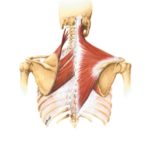
Sue Hitzmann, MS
Sue Hitzmann, MS
Article Archive
FINE
BY SUSAN L. HITZMANN, MS
ANATOMY
The Shoulder, Part IV
Dynamic shoulder movements in the horizontal plane.
The past three Fine Anatomy articles have examined movements of the shoulder and the shoulder girdle. Because the shoulder is an immensely complex structure, personal trainers must invest a significant amount of time and effort learning its “functional pathologies” and understanding ba…
The past three Fine Anatomy articles have examined movements of the shoulder and the shoulder girdle. Because the shoulder is an immensely complex structure, personal trainers must invest a significant amount of time and effort learning its “functional pathologies” and understanding basic anatomy in order to create sound exercise program design.
Read Morefine anatomy
by Susan L. Hitzmann, MS
The Shoulder, Part III
Studying the rotator cuff, and medial and lateral rotation.
T
The arm (upper limb) rotates medially and laterally about a vertical axis (through the long axis of the humerus). This motion is produced by contraction of the rotator muscles along with other muscles of the upper limb. Arm rotation about its long axis can occur in any pos…
Read MoreThe arm (upper limb) rotates medially and laterally about a vertical axis (through the long axis of the humerus). This motion is produced by contraction of the rotator muscles along with other muscles of the upper limb.
Read MoreSUGGESTED EXERCISES The rotator cuff muscles are not balanced in their ability to internally or externally rotate the humerus. The external rotators, which are significantly weaker than the internal, should be exercised through range of motion (ROM). However, some of the exercises listed are specifically designed to encourage the stabilizing mechanics of the rotator cuff…
Read More&QAYour
Questions Answered
When was the last time you heard an infant say she couldn’t come out to play because she was having a bad hair day? How many toddlers do you know who’ll refuse an ice-cream cone because they want to squeeze into their “skinny jeans”? We are not born with a body image. The way we…
Read Morefine anatomy
by Susan L. Hitzmann, MS
The Shoulder Complex, Part II
Studying arm movement, kinesiology and exercises.
T
The multiarticular complex of the shoulder gives rise to the dynamic movement potential of the arm at the glenohumeral joint. If it were not for the physiological necessity of the scapulo-thoracic “joint” (discussed in the previous Fine Anatomy column, “The Shoulder Girdle,” …
Read MoreTThe multiarticular complex of the shoulder gives rise to the dynamic movement potential of the arm at the glenohumeral joint. If it were not for the physiological necessity of the scapulo-thoracic “joint” (discussed in the previous Fine Anatomy column, “The Shoulder Girdle,” IDEA Personal Trainer, October 2003, p.36) and its role during abduction or flexion of the upper limb to elevate, rotate, tilt and swivel, the elementary movements of the arm would be greatly limited.
Read MoreThe closer we look at movement or the potential movement of the human body, the more dynamic, intricate and specific it becomes. When studying the appendicular skeleton, personal trainers will benefit from understanding ideal range of motion (ROM), joint articulation and the influence of the axial skeleton on limb action. The Scapula and Stance The…
Read MoreUnderstanding the foot and how it functions is important in understanding the structure and function necessary for the body to withstand a lifetime of activity. After all, the muscular support that creates the body’s passive architecture—which allows, for example, the fundamental function
of gait—begins at the foot.
Because the ground constantly has variables, human feet need to adapt to their interface with it immediately on contact. In normal function and anatomical position, the ankle joint has extension (dorsiflexion) and flexion (plantar flexion). All other movements in the ankle region are created by the foot’s dynamic joint structure. The ankle is composed of…
Read More



